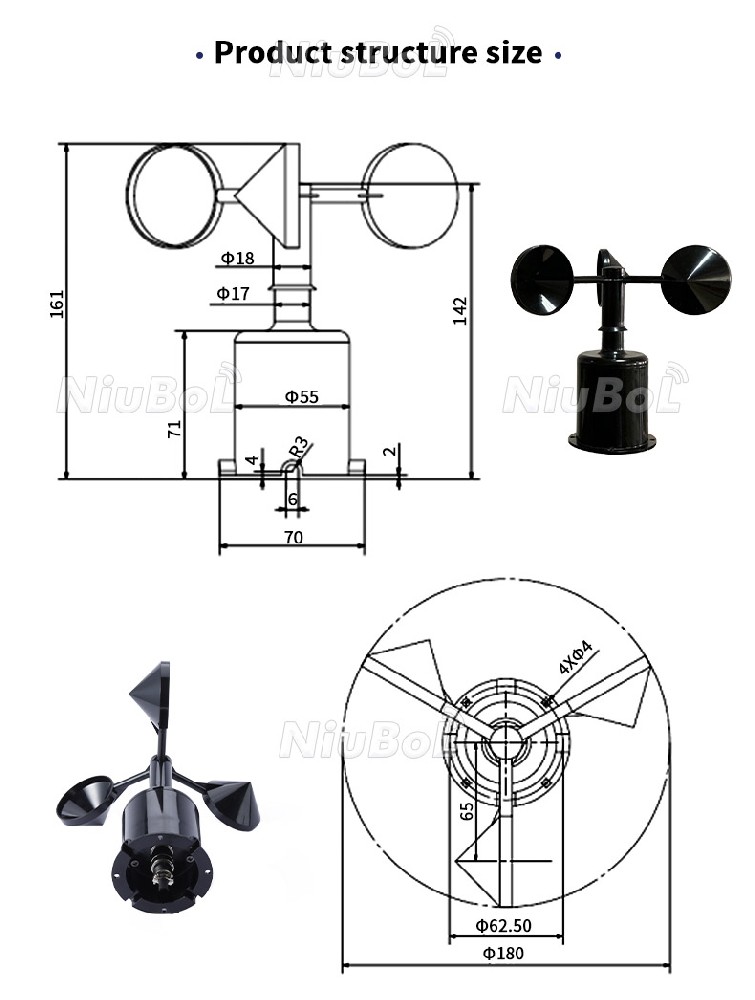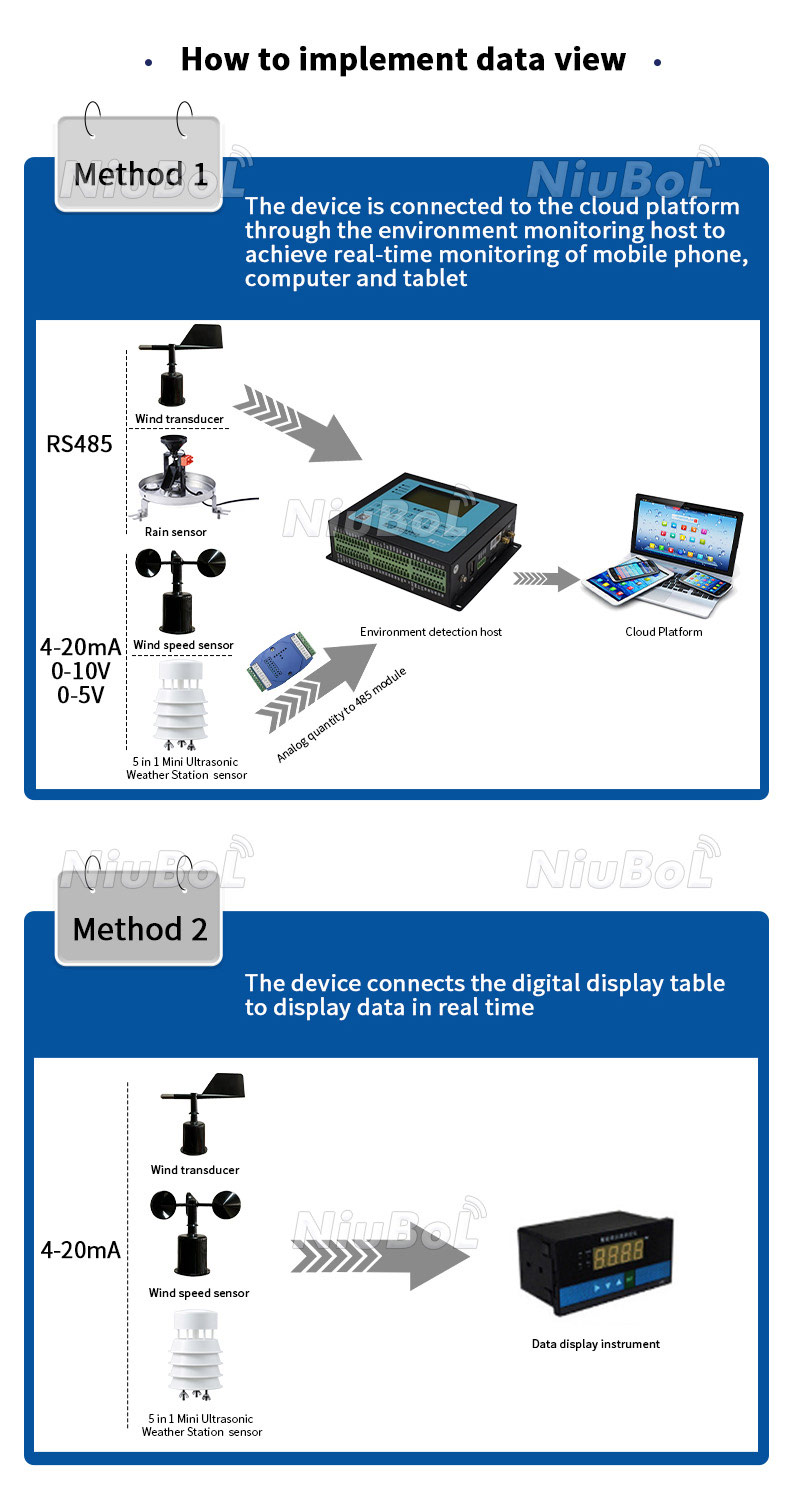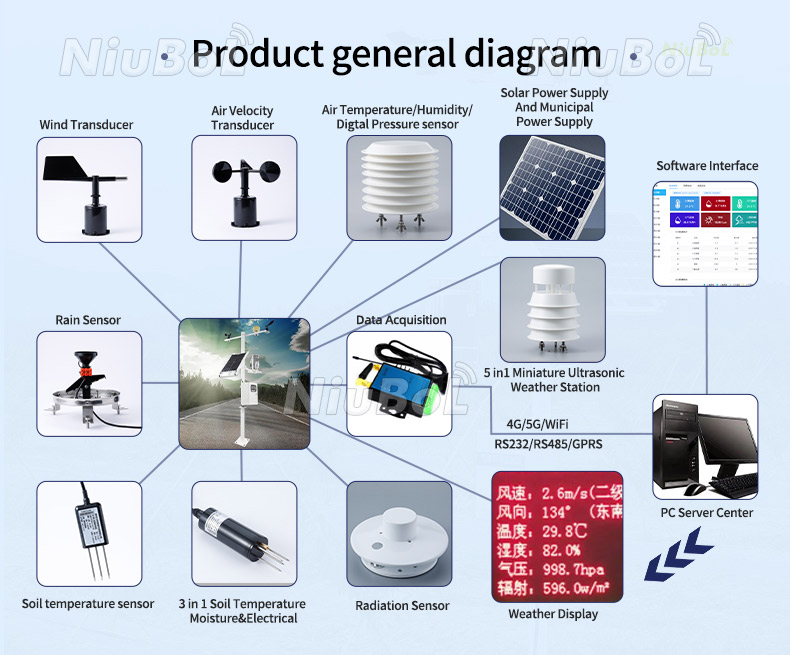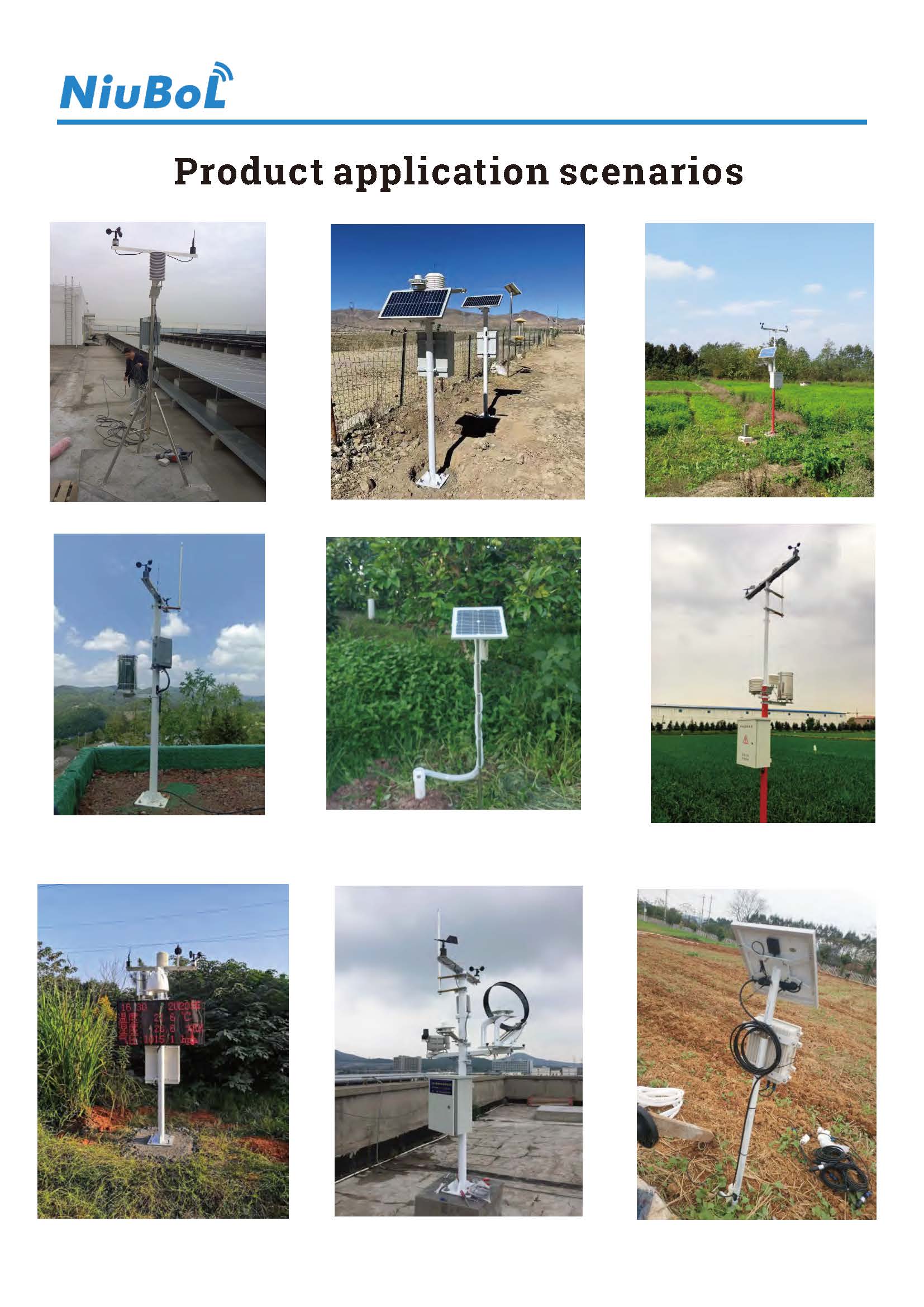

— Blogs —
—Products—
 Consumer hotline +8618073152920
Consumer hotline +8618073152920 WhatsApp:+8615367865107
Address:Room 102, District D, Houhu Industrial Park, Yuelu District, Changsha City, Hunan Province, China
Product knowledge
Time:2025-10-18 10:00:04 Popularity:453
Century-Old Legacy and Modern Evolution of Wind Speed Measurement: Core Principles, Performance Limits, and Best Practices of Cup Anemometers
Wind speed is one of the most fundamental and decisive parameters in meteorological observation systems. Whether predicting extreme weather, planning wind farm layouts, or monitoring the operational safety of industrial ventilation systems, the reliability of wind speed data forms the foundation of system decisions.
Over the past century and more, the cup anemometer has remained the symbol of wind speed monitoring. From 19th-century mechanical rotators to today's smart devices integrating digital sensing and low-friction structures, it has undergone dual evolutions in technology and materials.
NiuBoL redefines this century-old classic: Through digital output, low-friction bearings, and cloud-based calibration algorithms, it breathes new life into mechanical sensors for the IoT era.
The working principle of the cup anemometer appears simple but encapsulates the essence of fluid dynamics.
A typical anemometer consists of three or four hemispherical cups arranged equidistantly on a vertical rotating shaft. When airflow passes through, the concave side experiences greater force than the convex side, generating continuous rotational torque.
The pressure differential across different curved surfaces creates sustained torque. Higher wind speeds result in higher rotation frequencies, with a near-linear relationship (V = K × f), where K is the instrument's calibration coefficient.
A magnetic sensor or photoelectric encoder is installed below the rotating shaft, converting mechanical rotation into pulse signals. The acquisition system calculates the real-time wind speed by counting pulse frequency.
Every professional-grade cup anemometer undergoes K-coefficient calibration in a standard wind tunnel. This process ensures consistency between its output and actual wind speed, serving as the soul of the instrument's performance.
Despite the emergence of advanced wind measurement technologies like laser, Doppler, and ultrasonic methods, the cup anemometer remains the "go-to choice" for national meteorological bureaus, research institutions, and energy companies. This is due to its physical reliability, environmental adaptability, and economic maintainability.
With no optical components or complex circuits, it operates stably for extended periods even in high salt fog, sandstorms, freezing conditions, and more.
NiuBoL's industrial-grade models use aerospace aluminum and weather-resistant ABS composites, featuring UV resistance, corrosion resistance, and high-temperature tolerance, ideal for years of unattended field deployment.
Mature mechanical structures mean low production costs and long maintenance cycles. For wind energy assessments or large-scale meteorological monitoring networks, this translates to lower total cost of ownership (TCO).
Low requirements for verticality and power supply environments. Users only need to periodically check bearing lubrication for long-term operation, without requiring professional maintenance teams.
Every classic technology has physical limits. For modern applications demanding dynamic response and turbulence analysis, the mechanical characteristics of the cup anemometer impose the following constraints:
Due to bearing friction and air resistance, the device requires sufficient wind force to overcome static friction. Typical starting wind speeds for standard anemometers range from 0.5–1.2 m/s; below this threshold, accurate response may be impossible.
During sudden wind speed changes, the rotating system experiences inertial delay. This leads to underestimation during gusts and overestimation during lulls, causing errors in turbulence intensity measurements.
The cup anemometer measures only scalar wind speed and cannot capture wind direction, typically requiring pairing with a wind vane to form a complete meteorological wind measurement unit.

Facing the dual challenges of high precision and IoT integration, NiuBoL optimizes engineering and fuses digitalization, making the cup anemometer a key component of flagship solutions once again.
Using high-precision seals, starting wind speed is reduced to <0.5 m/s, significantly enhancing low-wind-speed responsiveness.
High-resolution photoelectric encoders output standard pulse signals or RS485 digital signals, directly interfacing with PLCs, data loggers, or IoT terminals, resolving issues like drift and attenuation in analog signals.
For cold regions and marine environments, NiuBoL integrates low-power heating elements to automatically keep the shaft clear of ice, ensuring normal operation even at -40°C.

An international energy company deployed multiple NiuBoL digital cup anemometers on a North Sea offshore platform to validate ultrasonic anemometer drift. After 18 months of continuous operation, the devices maintained ±1% accuracy.
In an urban microclimate monitoring network, NiuBoL cup anemometers paired with wireless gateways enable cloud data synchronization. Their stable and reliable pulse outputs provide foundational input parameters for building energy consumption models, supporting HVAC system energy-saving controls.

A: Industrial-grade anemometers typically last 3–5 years. The key lies in bearing quality and sealing protection.
A: If the starting wind speed noticeably increases, or if there are abnormal noises and vibrations at high wind speeds, it signals bearing wear.
A: Digital outputs offer high anti-interference capabilities, unaffected by cable resistance or electromagnetic fields; analog outputs are more susceptible to noise, resulting in slightly lower accuracy.
A: Fully compatible with mainstream interfaces (RS485 / Modbus / 4-20mA), they can directly connect to existing monitoring networks or cloud systems.

Choosing NiuBoL means selecting a modern rendition of century-old wind speed measurement technology. Our professional-grade anemometers combine stability, precision, and digital compatibility. Whether for wind farm site selection, meteorological research, building energy savings, agriculture, or environmental monitoring, NiuBoL provides authoritative and reliable data support for your projects.
→ Learn More About Our Products | Contact Us for Customized Solutions
Related recommendations
Sensors & Weather Stations Catalog
Agriculture Sensors and Weather Stations Catalog-NiuBoL.pdf
Weather Stations Catalog-NiuBoL.pdf
Related products
 Combined air temperature and relative humidity sensor
Combined air temperature and relative humidity sensor Soil Moisture Temperature sensor for irrigation
Soil Moisture Temperature sensor for irrigation Soil pH sensor RS485 soil Testing instrument soil ph meter for agriculture
Soil pH sensor RS485 soil Testing instrument soil ph meter for agriculture Wind Speed sensor Output Modbus/RS485/Analog/0-5V/4-20mA
Wind Speed sensor Output Modbus/RS485/Analog/0-5V/4-20mA Tipping bucket rain gauge for weather monitoring auto rainfall sensor RS485/Outdoor/stainless steel
Tipping bucket rain gauge for weather monitoring auto rainfall sensor RS485/Outdoor/stainless steel Pyranometer Solar Radiation Sensor 4-20mA/RS485
Pyranometer Solar Radiation Sensor 4-20mA/RS485
Screenshot, WhatsApp to identify the QR code
WhatsApp number:+8615367865107
(Click on WhatsApp to copy and add friends)
